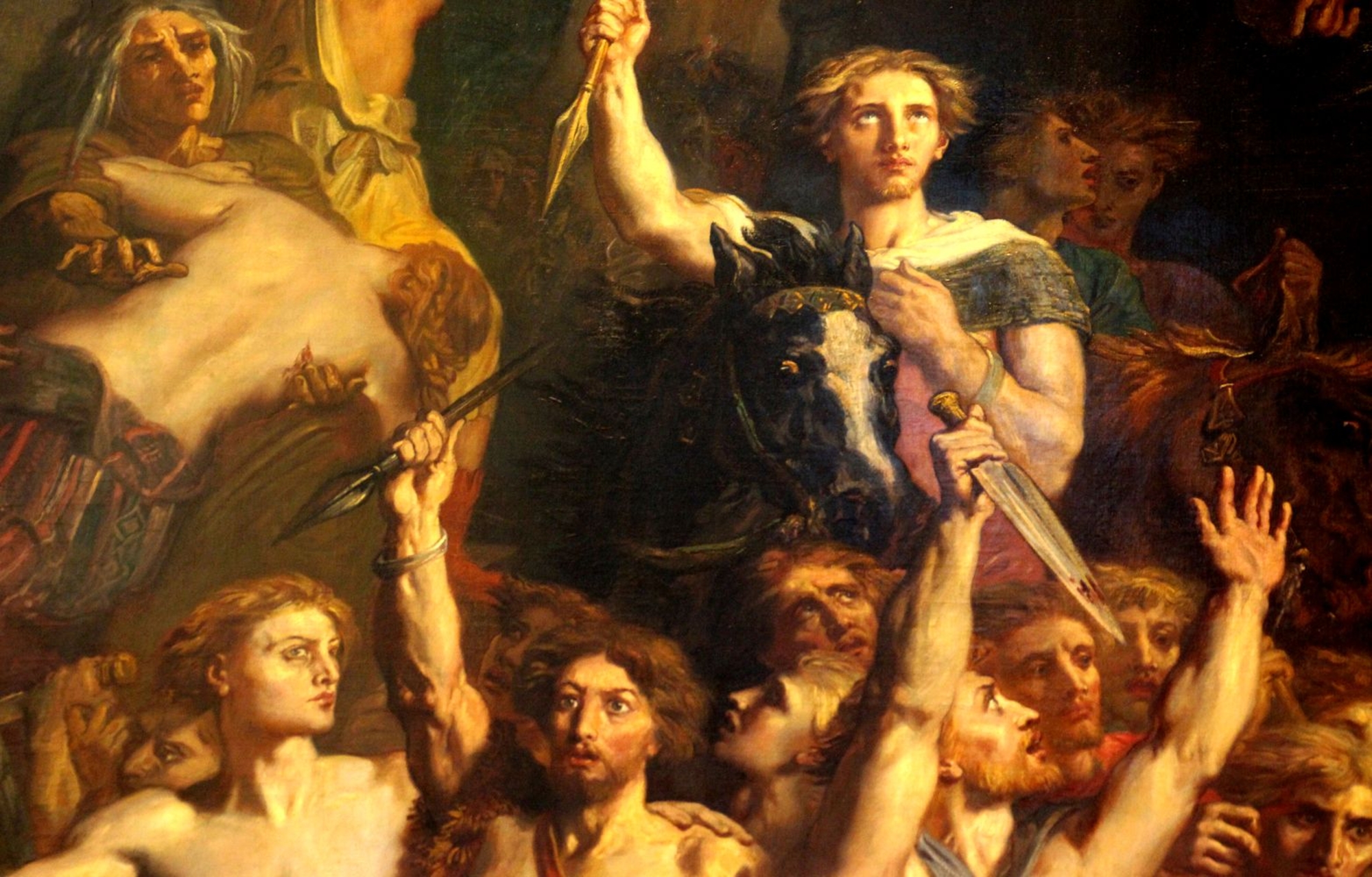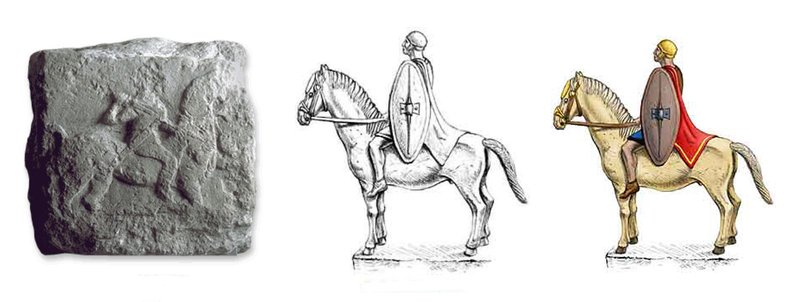- Home
- Society and power
- Powerful men
Reconstruction of a seated hero of Entremont and a seated hero discovered at Roquepertuse, 5th century BC.
A “royalty” with inherited power?
Our understanding of the social structure of southeast Mediterranean peoples must be based on a critical analysis of the information provided by ancient texts and archaeological data. The earliest textual sources available emphasize the existence of a “royalty” with inherited power among the peoples in the Marseilles region.
Nanos, the father of Gyptis, was the chief of the Segobriges and the “great man” of the region in which the first Phocaean agglomeration was established. He was succeeded by his son, Comanos. The mythic tale of the foundation of Massalia, conventional though it may be, presents the same image as that presently revealed through analysis of the funerary context. Both indicate that as early as the first Iron Age certain families possessed an excess of goods and perhaps already collected benefits from some of the land or its revenues.
These are the same families who controlled the organization of exchanges with the Phocaeans from the start. The evidence of lead leaves from the western Languedoc region during the 4th and 5th centuries BC leaves no doubt as to the implication of locals in the regional maritime commerce.
The statues of seated heroes from the site of Rouquepertuse at Velaux (Bouches-du-Rhône), which have been stylistically attributed to the 5th century BC, clearly attest to the emergence of powerful families at the end of the first Iron Age, as well as to a nearby sanctuary that was apparently devoted to their glory.
A fundamentally rural and divided power
During the 3rd and 2nd centuries BC, the elite class of the hinterland of Marseilles remained profoundly rural. Its members lived on fortified farms whose size was clearly a function of the degree of political importance and material possessions of their family. Grouped settlements, on the other hand, which were planned, organized, fortified, and generally larger in size, were essentially occupied by agricultural workers and artisans. The site of Roquepertuse (3rd century BC) is a likely example of one of these fortified farms attached to a hamlet, the latter serving to house indispensable dependents, such as warriors, artisans and peasants who worked the neighboring land.
Close-up of a bas-relief of an equestrian aristocrat in combat.
An aristocracy of equestrians and warriors
The texts describing the fall of the last Salyen bastion of resistance in 123 BC, and the escape of the surviving leaders under the protection of their allies the Allobroges, are rich with information. In addition to the power of their interdependent ties, we learn that the Salyen federation was directed by a basileus who was supported by a dunastai.
In this part of the Midi region (southern France), as elsewhere in Gaul according to Cesar, the power at the end of their independance was concentrated in the hands of large aristocratic families (equites), who were themselves undoubtedly served by other more modest families who constituted their clientele (or ambacti).
…from where do the new cultural values emerge
Within this equestrian class, attached to firm traditional values, new conceptions of social life clearly emerged during the 2nd century BC, along with an affirmation their social rank.
The text of Diodore de Sicile (Bibliothèque historique, XXXIV, 23) on the conquering of the last hold of the Salyens tells us of the cultural and political divergences that weakened the appearance of unity among this social class. Indeed, the Gallic prisoner Craton (Greek for “powerful”) was snubbed by his peers because he opposed the instigation of conflicts with Marseilles. In the end, he was recognized among the prisoners and freed “with nine hundred of his own”.
In addition to informing us of the magnanimity of the victorious Craton, and the magnitude of his aristocratic “household”, this text is an exceptional testimony to the violence that could be generated by oppositions within this class. In contrast to the local majority in power, Craton opted to embrace certain Mediterranean values, and certainly commercial activities. He thus rejected more traditional values based on the courage of warriors, heroic practices, and the restricting relations associated with dependence on the land.


